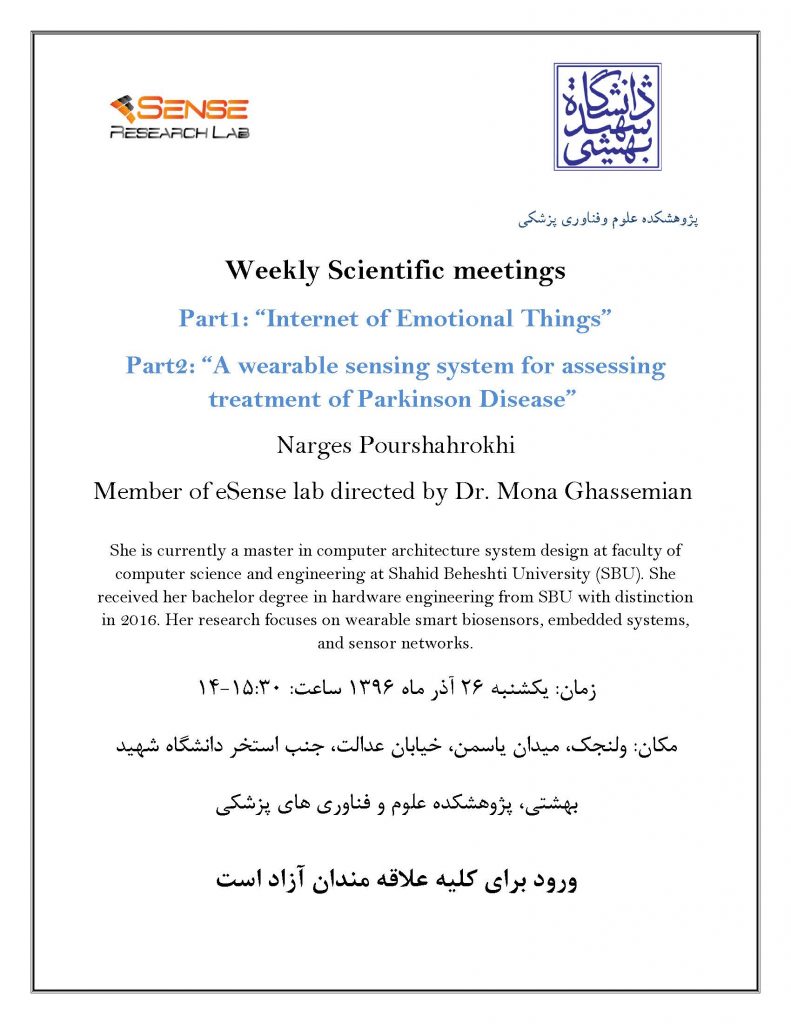M.Sc. Thesis Defense Session
in
Information Technology (Electronic Commerce)
Tittle:
Propose a method for security and protecting privacy in smart homes in the context of the internet of things
By
Masoumeh Sharafi
Supervisor:
Dr. Faranak Fotouhi
2nd Supervisor:
Dr. Mona Ghassemian
Examination Committee:
Dr. Mohsen Nikraay – Dr. Yaghoub Farjami
Location: Defense Room, School of Engineering, University of Qom.
Time: Saturday, January 20 , 2018 (30 Dey 1396) – 11:30.
Abstract: Today, the concept of the Internet of objects has emerged with the advancement of technology and the ability to connect objects to each other and the Internet. The Internet of objects technology provides the grounds for devices to receive and process data from the environment, in addition to communication with each other and with the surrounding environment. Meanwhile, smart home is one of the most important applications in the Internet of objects domain. Smart homes allow smart objects, including environmental sensors, to receive, process and send information from the environment and send to base stations. Access to personal information of individuals should be made consciously and with their consent, otherwise the privacy of individuals will be violated. Security and privacy are one of the most important challenges in the field of smart home. Privacy is divided into two parts: privacy of data and privacy of context. Cryptography is one of the most commonly used methods for data privacy. On the other hand, sensors have limited hardware resources, power and memory constraints, as well as poor processing, hence traditional encryption methods are not suitable for these sensors. Chaos based encryption has been one of the major issues in the field of encryption in recent years. The unique features of chaos based mapping, including the sensitivity to initial conditions and the proper diffusion and distortion, have transformed these mapping into one of the options used in the design of password systems.
The current paper proposes a chaotic chip-based encryption system for wireless sensors called MBCC, which is an improved encryption algorithm based on chaos in the wireless sensor network environment called BCC. The proposed algorithm, coupled with some of the algorithms used in wireless sensor network security protocols, has been implemented in Java in the SunSPOT sensor environment. By reducing the number of calls to some operations in the MBCC algorithm, this algorithm has better relative performance indicators depending on the processor used compared to the BCC algorithm. In terms of performance in MBCC, the time and energy of the encryption operation of a 32-byte data has been reduced by about 5.4 and 5 times, respectively, compared to that of BCC. Also, RAM and ROM memory usage in cache and decryption operations in MBCC decreased by 15.09% and increased by 0.06%, respectively, compared to that of BCC. Increasing the key length from 64 bits to 128 bits has led to an increase in the robustness of the MBCC algorithm against a Brute-force attack. Finally, in this study, in addition to improving the efficiency of a chaotic encryption algorithm, various types of encryption methods are implemented and compared in the SunSPOT sensor environment.
Keywords: Internet of Things, Data Security and Privacy, SunSPOT Sensors Security, Chaos- based Block Encryption


